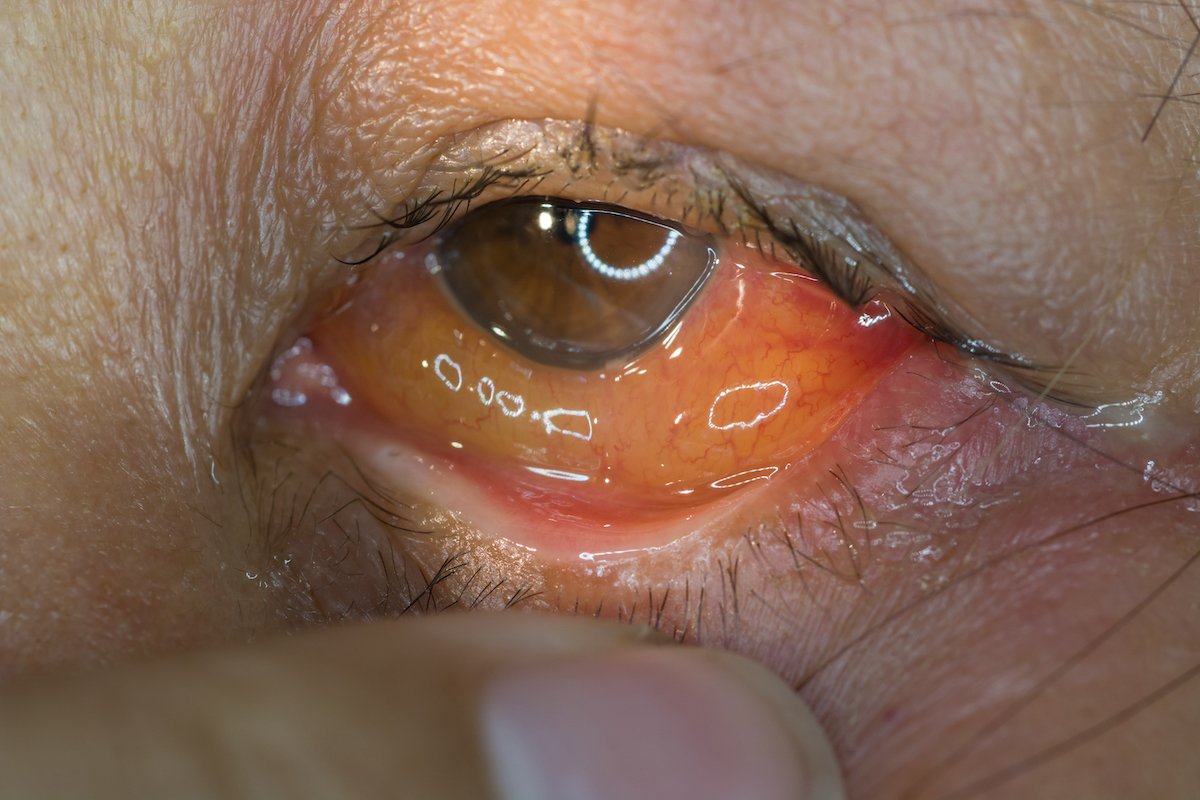Conditions: Chemosis
What is chemosis?
Mild chemosis. The left image shows the area of chemises outlined in red.
Chemosis is the swelling of the top tissue layer over the white part of the eye, the conjunctiva. In general, chemosis is a nonspecific sign of eye irritation. The conjunctiva becomes swollen and gelatinous in appearance. Often, the eye area swells so much that the eyes become difficult or impossible to close fully. Sometimes, it may also appear as if the eyeball has moved slightly backwards from the white part of the eye due to the fluid filled in the conjunctiva all over the eyes except the iris. The iris is not covered by this fluid and so it appears to be moved slightly inwards.
This is an example of severe chemosis. Note the normal appearing cornea and iris (the colored part of the eye) and the swelling of the lining over the sclera (white part of the eye).
What causes chemosis?
As chemosis is a result of irritation of the conjunctiva, it has many various and sundry causes. Chemosis is often caused by allergies or viral infections. A feeling of irritation can induce eye rubbing, making the condition worse. Other causes include nearby trauma (including surgery), hyperthyroidism, associated with bulging of the eye (“exophthalmos”) and incomplete closure of the eyelids, other infections, glaucoma and systemic lupus erythematosis.
Why is chemosis a problem?
Since chemosis temporarily alters the surface shape of the eye, it can affect movement of the tear film. Areas of the conjunctiva not cleaned and hydrated by tears can become more swollen, leading to prolongation of the problem.
HOw is chemosis prevented?
Since chemosis is a reaction to an irritation, avoidance of the causative problem, if possible, is the prevention.
How is chemosis identified?
A patient may notice irritation and itchiness of the eyes. Chemosis may be identified on examination by a physician.
How is chemosis treated?
Treatment depends on the cause of the chemosis. For example, an infectious cause may require treatments for the infection. Chemosis caused by nearby surgery or trauma is often treated with lubrication, pressure patching, steroid drops, and time. If these measures fail, minor procedures such as opening the swollen conjunctiva or cauterizing it can be effective.



